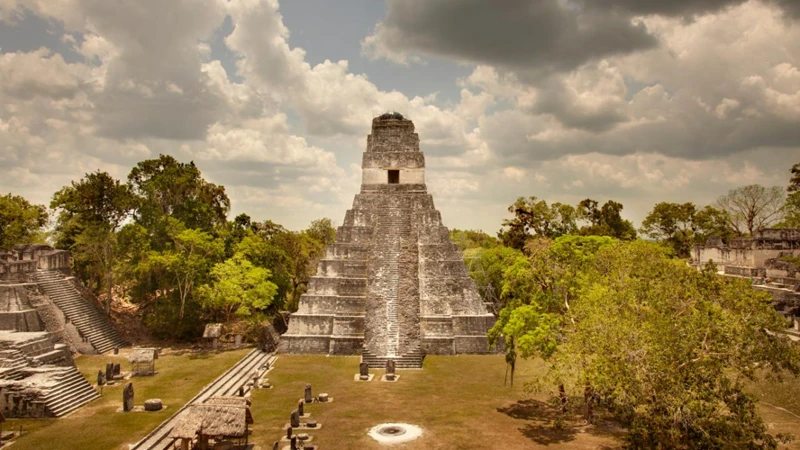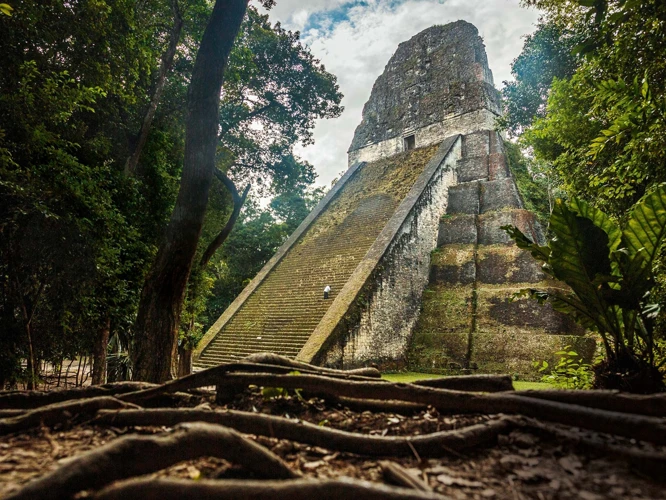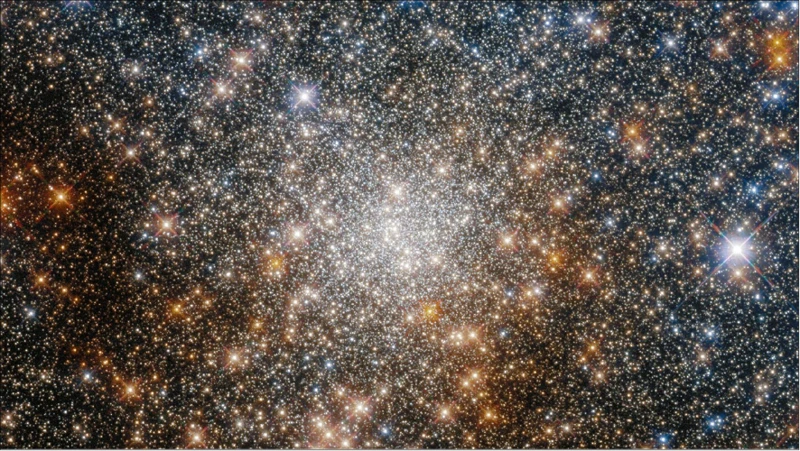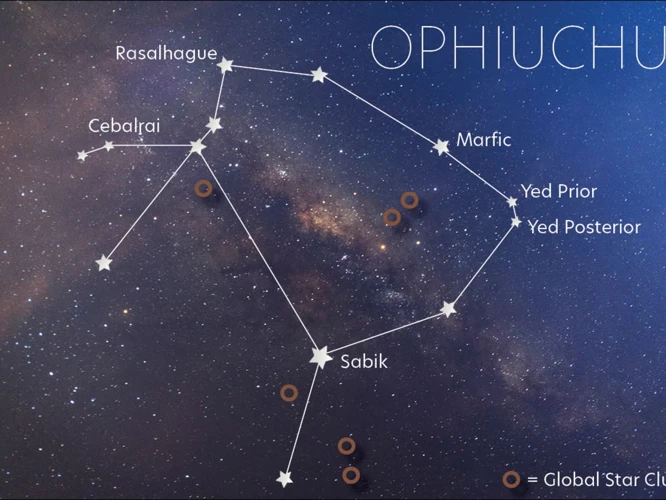The enigmatic collapse of the Maya civilization has remained an enduring mystery, captivating historians, archaeologists, and scholars alike. This ancient civilization, known for its remarkable advancements in agriculture, architecture, and mathematics, thrived for centuries in the dense rainforests of Mesoamerica. However, at the height of its power, the Mayan civilization abruptly declined, leaving behind a legacy of abandoned cities and lost knowledge. The reasons behind this collapse are hotly debated, with theories ranging from environmental factors to social and political unrest. In this article, we will delve into the rise and fall of the Maya civilization, explore the potential causes of its collapse, examine the effects it had on the region, discuss modern theories and discoveries, and highlight the unanswered questions that continue to fuel ongoing research in the field.
Contents
- The Rise of the Maya Civilization
- Possible Causes of Collapse
- Effects of the Collapse
- Modern Theories and Discoveries
- Unanswered Questions and ongoing Research
- Conclusion
-
Frequently Asked Questions
- What is the significance of the Maya civilization?
- How did the Maya civilization sustain its population?
- What were the major achievements of the Maya civilization?
- Did the Maya civilization have a centralized government?
- What were the key factors that contributed to the collapse of the Maya civilization?
- What role did trade play in the Maya civilization?
- Did the Maya have a writing system?
- What evidence is there of the Maya’s astronomical knowledge?
- What impact did the collapse of the Maya civilization have on the region?
- What ongoing research is being conducted on the Maya civilization?
- References
-
Frequently Asked Questions
- 1. How did the Maya civilization rise to power?
- 2. What led to the enigmatic collapse of the Maya civilization?
- 3. Did environmental factors play a role in the Maya collapse?
- 4. How did the collapse affect Maya cities?
- 5. What were the consequences of the Maya collapse?
- 6. Are there any modern theories about the collapse of the Maya civilization?
- 7. Was climate change a factor in the Maya collapse?
- 8. What evidence supports the warfare and conflict theories?
- 9. Has any remarkable evidence been uncovered related to the Maya collapse?
- 10. Why is ongoing research important in understanding the Maya collapse?
- References
- Read More
The Rise of the Maya Civilization

The Maya civilization emerged in the ancient Mesoamerican region, encompassing present-day Guatemala, Belize, Honduras, El Salvador, and parts of Mexico. The rise of this extraordinary civilization can be attributed to a combination of factors that allowed the Maya people to flourish and develop a sophisticated society. One of the key factors was their mastery of agriculture. The Maya ingeniously engineered complex systems of terraced fields, irrigation canals, and raised beds, allowing them to cultivate crops such as maize, beans, squash, and cacao. This agricultural prowess not only sustained a growing population but also provided surplus food that supported the development of other industries, including trade and craftsmanship. Another crucial element in the rise of the Maya was their advanced understanding of mathematics and astronomy. They devised an intricate calendar system, aligning their religious ceremonies and agricultural practices with celestial events. This celestial knowledge also helped them navigate vast distances, enabling extensive trade networks to flourish across the region. Additionally, the Maya civilization was characterized by a highly organized political structure. City-states, each encompassing urban centers and surrounding territories, were ruled by powerful kings who held both religious and political authority. These city-states engaged in diplomatic relationships, alliances, and sometimes even warfare. Monumental structures, such as temples and palaces, adorned the cities and showcased the wealth and power of the ruling elite. The combination of agricultural prowess, astronomical knowledge, and a well-structured political system allowed the Maya civilization to thrive and reach its zenith during the Classic Period (250-900 AD).
Possible Causes of Collapse

The collapse of the Maya civilization remains a topic of intense speculation and debate among scholars. Numerous possible causes have been put forth to explain the sudden decline of this remarkable civilization. One prominent theory suggests that environmental factors played a significant role. The Maya population grew rapidly, placing immense pressure on the fragile ecosystems of the region. Deforestation for agriculture and the extraction of resources like timber and limestone may have resulted in soil degradation and loss of biodiversity, leading to agricultural decline and food scarcity. Drought is another environmental factor that has been proposed. Evidence of prolonged periods of drought has been found in the region, and it is believed that these dry spells could have severely impacted agricultural productivity and water availability. The collapse of trade networks and the disruption of vital food supplies could have contributed to social and political unrest as resources became increasingly scarce. Internal conflicts, political instability, and the breakup of alliances among the Maya city-states may have weakened the centralized authority and coordination necessary for a thriving civilization. While there is no definitive answer, a combination of environmental factors and social and political challenges likely played a role in the enigmatic collapse of the Maya civilization.
Environmental Factors
The collapse of the Maya civilization has long been attributed, at least in part, to various environmental factors. One of the primary factors was the strain on agricultural resources due to overpopulation. As the population grew, the demand for food increased, which led to the expansion of agricultural lands, deforestation, and intensive agricultural practices. This resulted in soil erosion and depletion, making it increasingly difficult to sustain a large population. Drought is another significant environmental factor that likely played a role in the collapse. Studies conducted on sediment cores from lake beds and caves suggest that the Maya experienced several prolonged periods of drought during the Classic Period. These droughts would have severely impacted agricultural productivity and access to clean water, leading to widespread famine and social upheaval. Deforestation played a crucial role in exacerbating the effects of drought. The Maya relied heavily on the forest for resources such as timber, fuel, and construction materials. However, rampant deforestation disrupted local ecosystems, reduced rainfall, and further contributed to soil degradation. Natural disasters, such as hurricanes and earthquakes, could have also contributed to the collapse. For instance, some researchers speculate that the region may have been affected by ashfall and decreased sunlight following a volcanic eruption in the early 6th century. While it is essential to note that environmental factors alone may not have caused the collapse, their cumulative effects likely destabilized the delicate balance within Maya society, exacerbating existing social and political issues. The collapse of the Maya civilization serves as a reminder of the profound influence environmental factors can have on the stability and longevity of complex societies.
Social and political factors played a significant role in the enigmatic collapse of the Maya civilization. One of the contributing factors was the escalating competition and conflict among city-states. As the population grew and resources became scarce, rivalry over fertile lands and control over trade routes intensified. This led to frequent warfare between city-states, which drained resources and created a climate of instability. Additionally, the centralized political structure of the Maya civilization meant that the downfall of a powerful city-state could have far-reaching consequences. If a dominant city-state was defeated or weakened, it could disrupt trade networks, causing economic decline and undermining the stability of neighboring city-states. Internal social factors also contributed to the collapse. Scholars speculate that the rigid hierarchical social structure, with the ruling elite enjoying vast privileges and wealth, may have led to growing social unrest and dissatisfaction among the lower classes. This could have resulted in revolts, waves of emigration, or general apathy towards the existing political order. Climate change and environmental stressors directly impacted the social fabric of the Maya civilization. Droughts, unpredictable rainfall patterns, and agricultural failures put immense pressure on the population, making them more vulnerable to social and political instability. It is important to note that these factors likely interacted and compounded each other, creating a cascading effect that eventually led to the collapse of the Maya civilization.
Effects of the Collapse

The collapse of the Maya civilization had far-reaching effects on the region, reshaping the landscape and leaving a profound impact on the cultural and social fabric of Mesoamerica. One significant effect was the widespread abandonment of cities. Once thriving urban centers became deserted, as the population dispersed and relocated to smaller settlements. The reasons for this mass exodus are still debated, but factors such as environmental degradation, resource depletion, and social unrest likely played a role. The collapse also resulted in the loss of knowledge and cultural traditions. The Maya had developed a complex system of writing, mathematics, and astronomy, but much of this knowledge was lost or forgotten after the collapse. Mayan literature was largely destroyed, leaving only fragments to be deciphered by later scholars. The collapse led to a fragmentation of the Mayan identity, as trade networks and political alliances broke down, leading to the loss of a unified Mayan civilization. The effects of the collapse were long-lasting and left an indelible mark on the region, shaping its history for centuries to come.
Abandonment of Cities
The abandonment of cities is a striking consequence of the collapse of the Maya civilization. During the Terminal Classic Period (800-1000 AD), many once-thriving urban centers were mysteriously deserted. The reasons behind this mass exodus continue to baffle researchers and have spurred numerous theories. One prevailing hypothesis suggests that environmental factors played a significant role in the abandonment. The Maya relied heavily on agriculture, and it is believed that a combination of overpopulation, deforestation, and intensive farming practices led to soil degradation and a decline in agricultural productivity. This, in turn, could have triggered food shortages and social unrest, driving people to abandon their cities in search of more fertile lands. Another theory focuses on social and political factors. The Maya city-states were interconnected through a complex web of alliances and rivalries, often engaging in warfare. It is possible that internal conflicts, power struggles, and the failure of political systems to adapt to changing circumstances contributed to the collapse. Additionally, it is thought that epidemics and droughts could have exacerbated the societal instability, further contributing to the abandonment of cities. The decline of the Maya civilization resulted in the dissolution of once-thriving urban centers, leaving behind empty, hauntingly silent remnants of a once-great civilization. The ruins of Tikal, Palenque, and Chichen Itza stand as testament to the enigma of the Maya’s abrupt departure from their once-flourishing cities.
Loss of Knowledge and Cultural Traditions
The collapse of the Maya civilization resulted in a significant loss of knowledge and cultural traditions that had been developed and passed down through generations. As cities were abandoned and the population dispersed, the once-thriving centers of learning and intellectual exchange fell into ruin. The extensive libraries and codices that contained invaluable information about Maya history, astronomy, and religious rituals were either destroyed or lost to time. The deep understanding of mathematics, astronomy, and calendrical systems that the Maya had achieved was largely forgotten. This loss had profound consequences for future generations, as the intricate knowledge of celestial events and agricultural practices that had allowed the Maya to thrive was lost. The decline of the Maya civilization led to the disappearance of cultural traditions, including the intricate art forms, religious ceremonies, and linguistic diversity that had characterized their society. The abandonment of cities meant the interruption of artistic and architectural practices, resulting in a decline in craftsmanship and the loss of unique artistic styles. The collapse of the Maya civilization not only erased tangible elements of their culture but also disrupted the transmission of intangible cultural practices, such as storytelling, religious rituals, and traditional healing methods. The loss of this accumulated knowledge and cultural heritage has left modern researchers and scholars with significant gaps in understanding the complexity and richness of the Maya civilization, making it even more challenging to decipher the mysteries of their enigmatic collapse.
Modern Theories and Discoveries

Modern theories and discoveries have shed new light on the enigma surrounding the collapse of the Maya civilization. One prevailing hypothesis suggests that environmental factors played a significant role in the downfall. Evidence from sediment cores, climate models, and studies of ancient pollen have indicated that the Maya experienced a prolonged period of drought during the Terminal Classic Period (800-1000 AD), severely impacting their agricultural systems and leading to increased societal stress. Another theory focuses on social and political factors, proposing that internal conflicts, escalating warfare, and political instability contributed to the collapse. Additionally, recent archaeological excavations have uncovered evidence of extensive deforestation, suggesting that the Maya’s reliance on wood for construction and fuel may have exacerbated environmental degradation and resource depletion. It is worth noting that while these theories provide valuable insights, the collapse of the Maya civilization remains a complex puzzle with ongoing research striving to uncover the true causes and dynamics that led to their enigmatic demise.
Climate Change Hypotheses
Climate Change Hypotheses:
One of the prevailing theories surrounding the collapse of the Maya civilization revolves around climate change. The Maya inhabited a region heavily reliant on agriculture, and any alterations in climate patterns would have had a significant impact on their ability to cultivate crops. Researchers have analyzed sediment cores from lakes in the Maya region, uncovering evidence of multi-year droughts during the time of the civilization’s decline. This prolonged period of drought, combined with deforestation caused by extensive farming practices, may have disrupted the delicate balance of the region’s ecosystem. The scarcity of water would have led to crop failures, food shortages, and ultimately, social upheaval. The extreme weather events and unfavorable growing conditions caused by climate change could have sparked conflicts over resources, exacerbated social tensions, and ultimately contributed to the collapse of Maya society. While climate change cannot be solely blamed for the downfall of the Maya, it likely played a role in destabilizing the civilization. Further research and analysis continue to shed light on the complex relationship between climate change and the enigmatic collapse of the Maya civilization.
Reference link: Impact of Asteroids and Comets on Earth’s History
Warfare and Conflict Theories
Warfare and conflict theories have been proposed as potential factors contributing to the collapse of the Maya civilization. Some researchers argue that internal strife and external invasions played a significant role in the downfall of Maya city-states. The Maya engaged in frequent warfare, often over territorial disputes and resources. Evidence of fortified structures, defensive walls, and mass graves suggests that conflict was a prevalent aspect of Maya society. Scholars speculate that the constant state of warfare may have led to the depletion of resources, loss of population, and erosion of social cohesion. Additionally, the arrival of foreign invaders, such as the Toltecs from central Mexico, may have put further strain on the already weakened Maya city-states. The Toltecs were known for their military prowess and their desire to expand their dominion. Some believe that conflicts with these external forces, combined with internal power struggles and weakened city-state alliances, ultimately contributed to the collapse of the Maya civilization. However, it is important to note that the exact role warfare played in the collapse remains a subject of debate among scholars. Further archaeological excavations, analysis of ancient texts, and interdisciplinary research are shedding new light on this intriguing aspect of Maya history.
Archaeological Evidence
Archaeological evidence has played a crucial role in unraveling the mysteries surrounding the collapse of the Maya civilization. Excavations at various Maya sites have provided valuable insights into the factors that may have contributed to their downfall. One of the most notable pieces of evidence is the discovery of abandoned cities and structures. Archaeologists have uncovered once-thriving urban centers, now reclaimed by the dense jungle, providing a stark visual representation of the collapse. These abandoned cities display signs of rapid abandonment, with buildings left unfinished and valuable artifacts left behind. The presence of mass graves and evidence of violence, such as burned structures and weapons, suggest that warfare and conflict may have played a significant role in the collapse. Additionally, the study of pollen samples and sediment cores from lakes and caves has shed light on the environmental changes that occurred during the decline. Analysis of these samples has revealed periods of severe drought, which may have resulted in agricultural failures and food shortages. Inscriptions and stelae found in Maya sites have provided glimpses into the political and social dynamics of the civilization. They document events such as wars, alliances, and political disputes, offering intriguing clues to the internal struggles that the Maya may have faced. These archaeological findings, combined with scientific techniques such as radiocarbon dating and remote sensing, continue to shape our understanding of the collapse of the Maya civilization and inform ongoing research.
Unanswered Questions and ongoing Research

The collapse of the Maya civilization remains a subject of intense debate and ongoing research. Despite decades of study and excavation, there are still numerous unanswered questions that continue to perplex scholars. One area of focus is the role of environmental factors in the collapse. While drought has often been cited as a significant factor, recent studies have shown that there is no conclusive evidence of a major drought during the collapse of the Maya civilization. This has led researchers to explore other possible environmental factors such as soil degradation and deforestation. Another area of ongoing research pertains to the social and political dynamics within Maya society. Researchers are interested in understanding the structure of political power and the extent to which it contributed to the collapse. Additionally, the abandonment of cities raises intriguing questions about the reasons behind this mass exodus. Was it due to warfare, political unrest, or some other factor? Archaeological excavations and analysis of artifacts continue to shed light on these mysteries. Another avenue of inquiry revolves around the decline in cultural traditions and knowledge. The collapse of the Maya civilization led to a fragmentation of their society and a loss of valuable knowledge and expertise. Scholars are striving to piece together the fragments of Maya history and decipher the meanings behind their intricate hieroglyphic writing system. Ongoing research also includes interdisciplinary approaches, combining archaeology with climatology, anthropology, and even satellite imaging, to gain a comprehensive understanding of the collapse. As new discoveries emerge and novel methodologies are employed, our understanding of the enigmatic collapse of the Maya civilization continues to evolve. It is through these ongoing efforts that we hope to unlock the secrets of this ancient society and gain insight into the factors that contributed to its ultimate demise.
Conclusion

In conclusion, the collapse of the Maya civilization remains an enigma that continues to intrigue researchers, as there is no single definitive answer to explain its demise. The Maya civilization experienced a remarkable rise, marked by significant advancements in agriculture, mathematics, astronomy, and political organization. However, the factors leading to its collapse are still a subject of debate. Environmental challenges such as drought, deforestation, and soil degradation likely played a role, placing strain on the agricultural systems that sustained the population. Social and political unrest, including internal conflict and rivalry between city-states, may have exacerbated the collapse. The abandonment of cities and the loss of cultural traditions and knowledge were significant consequences of this downfall. Modern theories and archaeological discoveries, coupled with ongoing research, are shedding new light on the possible causes of the collapse. Climate change hypotheses and evidence of warfare and conflict provide valuable insights, but many questions remain unanswered. Continued exploration and understanding of the Maya civilization are essential in unraveling the mystery of their collapse and broadening our understanding of ancient civilizations and their vulnerabilities.
Frequently Asked Questions

What is the significance of the Maya civilization?
The Maya civilization was highly significant, as it made remarkable advancements in agriculture, architecture, mathematics, and astronomy. Their sophisticated calendar system, architectural wonders, and complex social structure have left a lasting impact on Mesoamerican history and culture.
How did the Maya civilization sustain its population?
The Maya civilization sustained its population through a highly developed system of agriculture. They cultivated a variety of crops using innovative techniques such as terraced fields, irrigation canals, and raised beds, allowing them to support a growing population.
What were the major achievements of the Maya civilization?
The Maya civilization achieved significant milestones in various fields. They developed a complex writing system, made remarkable advancements in mathematics, built incredible architectural structures such as pyramids and temples, and had a profound understanding of celestial events.
Did the Maya civilization have a centralized government?
No, the Maya civilization was not centralized. Instead, it consisted of numerous independent city-states that were ruled by powerful kings. Each city-state had its own government and governing structure.
What were the key factors that contributed to the collapse of the Maya civilization?
The collapse of the Maya civilization was likely influenced by a combination of factors, including environmental changes, social unrest, political instability, excessive warfare, and the depletion of natural resources.
What role did trade play in the Maya civilization?
Trade played a vital role in the Maya civilization. The Maya people engaged in extensive trade networks, exchanging goods such as textiles, obsidian, jade, and cacao. This trade facilitated cultural exchange and contributed to economic growth.
Did the Maya have a writing system?
Yes, the Maya civilization had a complex writing system known as hieroglyphics. They used this system to record historical events, religious rituals, and astronomical observations. Deciphering this writing system has significantly enhanced our understanding of the Maya culture.
What evidence is there of the Maya’s astronomical knowledge?
The Maya’s astronomical knowledge is evident in their use of a highly accurate calendar system. They accurately observed celestial events such as solstices and equinoxes and aligned their religious and agricultural practices accordingly. Their architectural structures also reflect their understanding of celestial alignments.
What impact did the collapse of the Maya civilization have on the region?
The collapse of the Maya civilization resulted in the abandonment of many cities and the loss of centralized political and economic systems. This led to a decline in population, the fragmentation of society, and the loss of cultural traditions and knowledge.
What ongoing research is being conducted on the Maya civilization?
Ongoing research on the Maya civilization focuses on various aspects such as deciphering their hieroglyphic writing, understanding the causes of the collapse, examining social dynamics and trade networks, and exploring the relationship between the Maya and neighboring civilizations.
References
Frequently Asked Questions

1. How did the Maya civilization rise to power?
The Maya civilization began around 2000 BCE in present-day Mexico and Central America. They developed advanced agricultural practices, built impressive cities, and made significant advancements in art, science, and writing.
2. What led to the enigmatic collapse of the Maya civilization?
The exact cause of the Maya civilization’s collapse remains a mystery, but possible factors include environmental degradation, warfare, political instability, and social unrest. A combination of these factors likely contributed to their downfall.
3. Did environmental factors play a role in the Maya collapse?
Yes, environmental factors such as deforestation, soil erosion, and droughts likely played a significant role in the Maya collapse. These issues could have led to agricultural decline, food shortages, and increased social instability.
4. How did the collapse affect Maya cities?
The collapse led to the widespread abandonment of many Maya cities. Once-thriving urban centers were left deserted, reclaimed by nature over time. This mass abandonment had a profound impact on the landscape and the subsequent development of the region.
5. What were the consequences of the Maya collapse?
With the collapse, the Maya civilization lost much of its knowledge, cultural traditions, and political organization. The collapse also led to a decline in population, leaving behind a fragmented society struggling to maintain their former glory.
6. Are there any modern theories about the collapse of the Maya civilization?
Yes, modern theories suggest that climate change, wars, conflicts, and social upheaval may have played a role in the collapse. Researchers continue to explore these theories and analyze archaeological evidence to gain further insights into this mysterious event.
7. Was climate change a factor in the Maya collapse?
Climate change, particularly droughts, is believed to have contributed to the collapse. The Maya civilization heavily relied on agriculture, and prolonged periods of drought could have led to food scarcity and agricultural failure.
8. What evidence supports the warfare and conflict theories?
Archaeological findings, such as defensive structures, mass graves, and depictions of warfare in Maya artwork, suggest that warfare and conflicts played a role in the collapse. However, the extent of their impact and involvement is still a subject of ongoing research and debate.
Archaeologists have discovered evidence of dramatic population decline and cultural disruption during the collapse, including abandoned cities and broken trade networks. These findings shed light on the magnitude of the Maya collapse but also raise more questions about its causes.
10. Why is ongoing research important in understanding the Maya collapse?
Ongoing research allows us to refine existing theories and explore new ones. By analyzing new archaeological evidence and utilizing advanced scientific techniques, researchers can gradually unravel the mysteries behind the Maya collapse and gain a better understanding of human civilization’s vulnerabilities.







